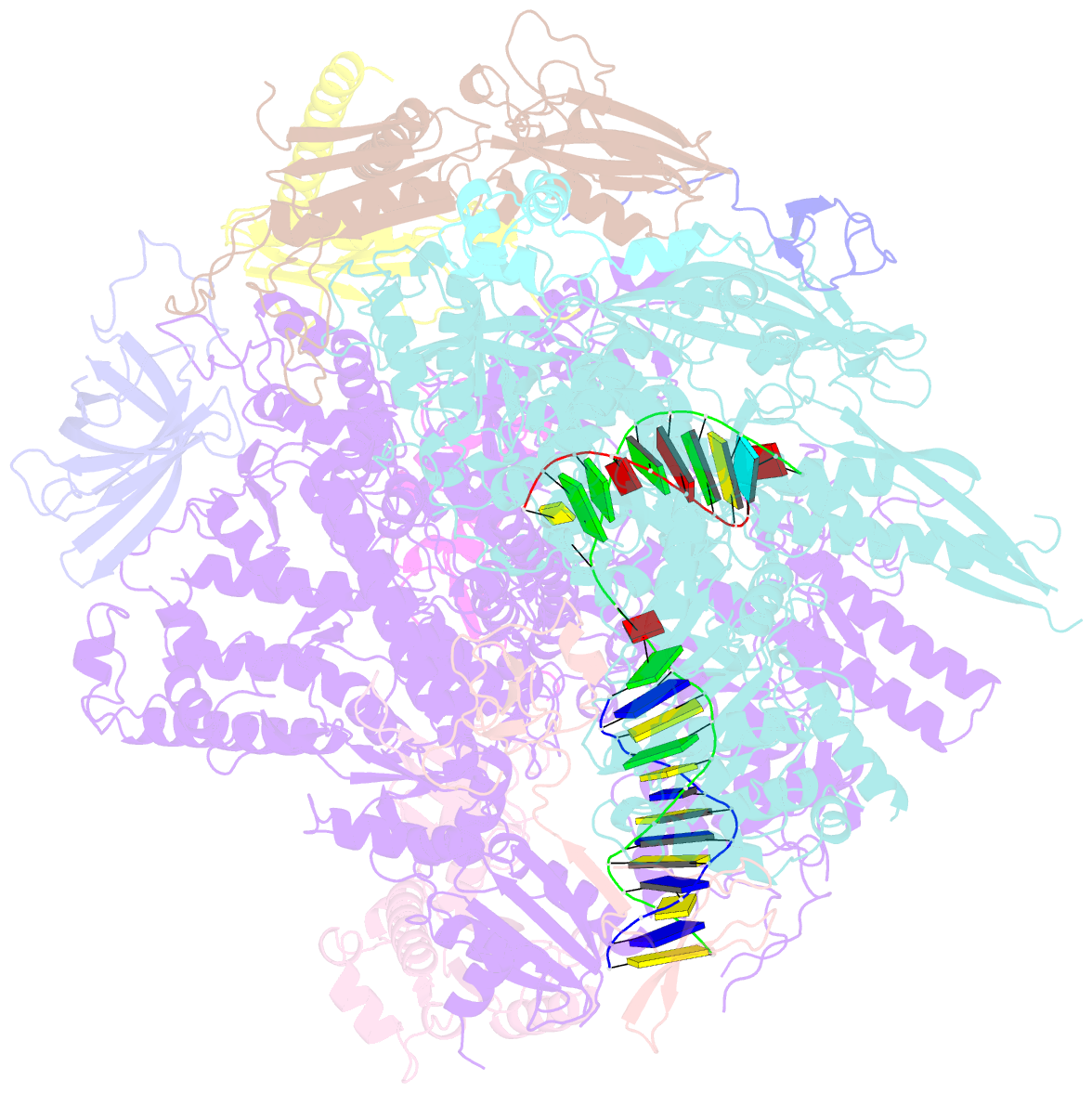Summary information and primary citation
- PDB-id
- 8uku; SNAP-derived features in text and JSON formats;
DNAproDB
- Class
- transcription-DNA-RNA
- Method
- X-ray (3.6 Å)
- Summary
- RNA polymerase ii elongation complex with fapy-dg lesion with cmp added
- Reference
- Gao S, Hou P, Oh J, Wang D, Greenberg MM (2024): "Molecular Mechanism of RNA Polymerase II Transcriptional Mutagenesis by the Epimerizable DNA Lesion, Fapy·dG." J.Am.Chem.Soc., 146, 6274-6282. doi: 10.1021/jacs.3c14476.
- Abstract
- Oxidative DNA lesions cause significant detrimental effects on a living species. Two major DNA lesions resulting from dG oxidation, 8-oxo-7,8-dihydro-2'-deoxyguanosine (8-OxodGuo) and formamidopyrimidine (Fapy·dG), are produced from a common chemical intermediate. Fapy·dG is formed in comparable yields under oxygen-deficient conditions. Replicative bypass of Fapy·dG in human cells is more mutagenic than that of 8-OxodGuo. Despite the biological importance of transcriptional mutagenesis, there are no reports of the effects of Fapy·dG on RNA polymerase II (Pol II) activity. Here we perform comprehensive kinetic studies to investigate the impact of Fapy·dG on three key transcriptional fidelity checkpoint steps by Pol II: insertion, extension, and proofreading steps. The ratios of error-free versus error-prone incorporation opposite Fapy·dG are significantly reduced in comparison with undamaged dG. Similarly, Fapy·dG:A mispair is extended with comparable efficiency as that of the error-free, Fapy·dG:C base pair. The α- and β-configurational isomers of Fapy·dG have distinct effects on Pol II insertion and extension. Pol II can preferentially cleave error-prone products by proofreading. To further understand the structural basis of transcription processing of Fapy·dG, five different structures were solved, including Fapy·dG template-loading state (apo), error-free cytidine triphosphate (CTP) binding state (prechemistry), error-prone ATP binding state (prechemistry), error-free Fapy·dG:C product state (postchemistry), and error-prone Fapy·dG:A product state (postchemistry), revealing distinctive nucleotide binding and product states. Taken together, our study provides a comprehensive mechanistic framework for better understanding how Fapy·dG lesions impact transcription and subsequent pathological consequences.





